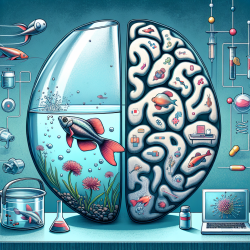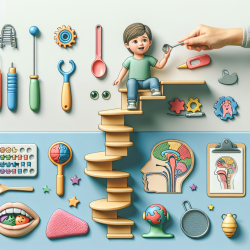Attention Deficit Hyperactivity Disorder (ADHD) is a prevalent condition affecting children worldwide, with significant implications for their academic and social development. Traditional diagnostic methods often involve clinical settings that can be intimidating for children, potentially affecting the accuracy of the diagnosis. However, recent advancements in technology offer innovative solutions that can enhance the screening process. A study titled Deep Learning-Based ADHD and ADHD-RISK Classification Technology through the Recognition of Children’s Abnormal Behaviors during the Robot-Led ADHD Screening Game provides compelling evidence for the effectiveness of a novel, game-based approach to ADHD screening.
This research, conducted by a team from the Gwangju Institute of Science and Technology and Hanyang University Hospital in South Korea, utilized a robot-led game to collect skeleton data from children. The game, designed by ADHD specialists and child psychologists, creates a child-friendly environment that allows for the natural expression of behaviors. The study employed a bidirectional long short-term memory (LSTM) based deep learning model with a channel attention layer to classify children into normal, ADHD-RISK, and ADHD categories with high accuracy.
Key Findings
- The classification accuracy of the three groups was 98.15%, demonstrating the model's robustness.
- The attention scores indicated that data from the latter part of the game were crucial for identifying ADHD-RISK children, who tend to lose focus as the game progresses.
- This method offers a non-invasive, engaging, and highly accurate alternative to traditional ADHD screening techniques.
Implications for Practitioners
For practitioners working with children, integrating such technology into their diagnostic toolkit can offer several benefits:
- Improved Accuracy: The high classification accuracy of the model ensures reliable identification of ADHD and ADHD-RISK cases.
- Child-Friendly Environment: Conducting the screening in familiar settings like schools or child research centers reduces the stress and discomfort associated with clinical environments.
- Non-Invasive Method: The use of skeleton data and game-based interaction eliminates the need for uncomfortable sensors or clinical equipment.
Encouraging Further Research
While the study presents promising results, further research is necessary to refine and expand this approach. Practitioners are encouraged to collaborate with researchers to explore the following areas:
- Game Design: Developing new game stages that require sustained attention can help improve the classification accuracy for ADHD-RISK children.
- Algorithm Enhancement: Integrating additional data sources and refining the deep learning algorithms can further enhance the model's performance.
- Clinical Trials: Conducting larger-scale clinical trials can validate the findings and facilitate the adoption of this technology in real-world settings.
In conclusion, the integration of deep learning and robot-led games offers a transformative approach to ADHD screening, providing practitioners with a powerful tool to enhance their diagnostic capabilities. By embracing these technological advancements, we can create better outcomes for children with ADHD, ensuring timely and accurate diagnoses that pave the way for effective interventions.
To read the original research paper, please follow this link: Deep Learning-Based ADHD and ADHD-RISK Classification Technology through the Recognition of Children’s Abnormal Behaviors during the Robot-Led ADHD Screening Game.










